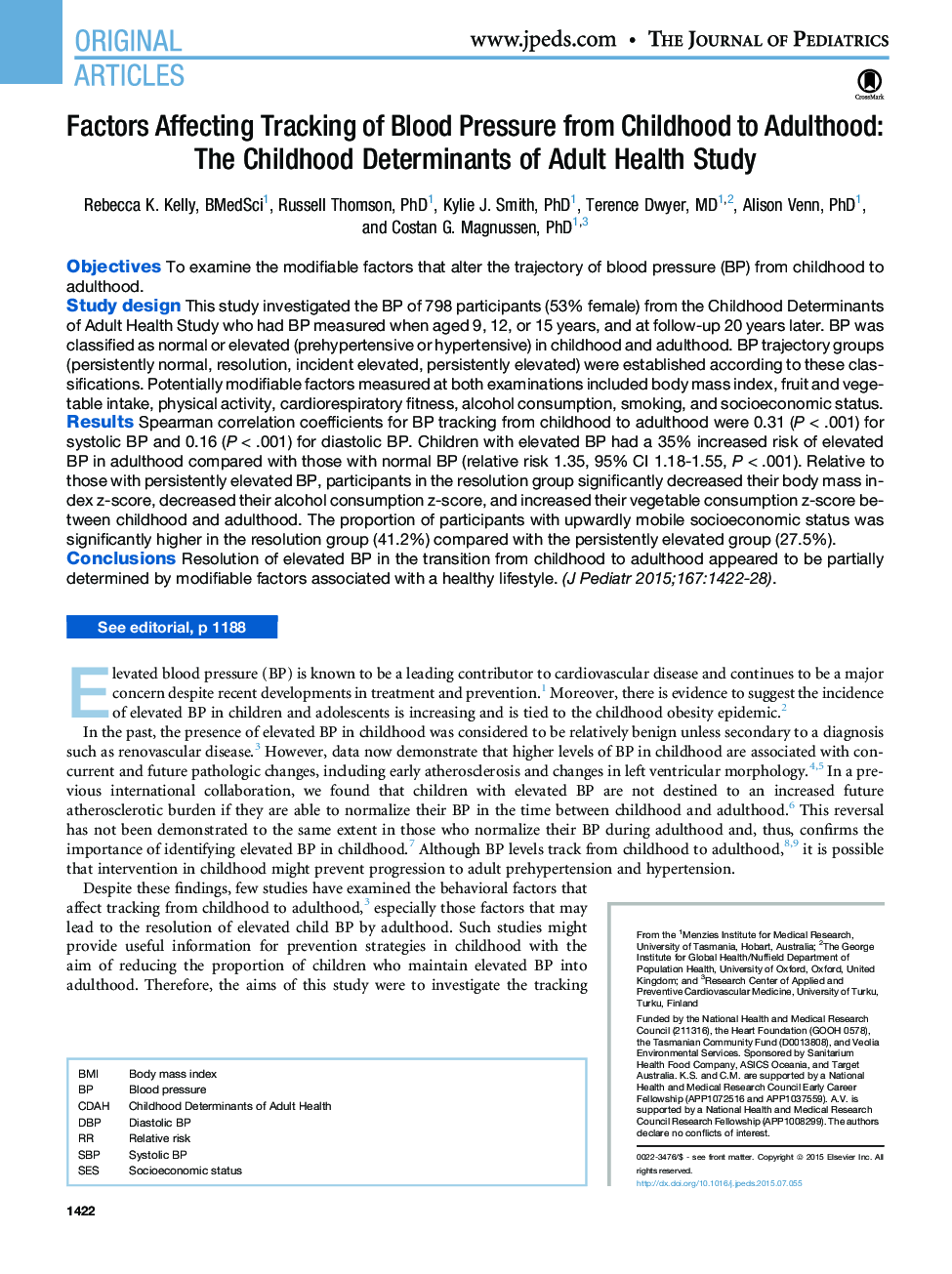| Article ID | Journal | Published Year | Pages | File Type |
|---|---|---|---|---|
| 6219774 | The Journal of Pediatrics | 2015 | 9 Pages |
ObjectivesTo examine the modifiable factors that alter the trajectory of blood pressure (BP) from childhood to adulthood.Study designThis study investigated the BP of 798 participants (53% female) from the Childhood Determinants of Adult Health Study who had BP measured when aged 9, 12, or 15Â years, and at follow-up 20Â years later. BP was classified as normal or elevated (prehypertensive or hypertensive) in childhood and adulthood. BP trajectory groups (persistently normal, resolution, incident elevated, persistently elevated) were established according to these classifications. Potentially modifiable factors measured at both examinations included body mass index, fruit and vegetable intake, physical activity, cardiorespiratory fitness, alcohol consumption, smoking, and socioeconomic status.ResultsSpearman correlation coefficients for BP tracking from childhood to adulthood were 0.31 (PÂ <Â .001) for systolic BP and 0.16 (PÂ <Â .001) for diastolic BP. Children with elevated BP had a 35% increased risk of elevated BP in adulthood compared with those with normal BP (relative risk 1.35, 95% CI 1.18-1.55, PÂ <Â .001). Relative to those with persistently elevated BP, participants in the resolution group significantly decreased their body mass index z-score, decreased their alcohol consumption z-score, and increased their vegetable consumption z-score between childhood and adulthood. The proportion of participants with upwardly mobile socioeconomic status was significantly higher in the resolution group (41.2%) compared with the persistently elevated group (27.5%).ConclusionsResolution of elevated BP in the transition from childhood to adulthood appeared to be partially determined by modifiable factors associated with a healthy lifestyle.
